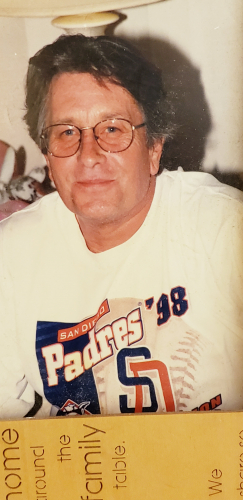Mcguffin Family History & Genealogy
Mcguffin Last Name History & Origin
AddHistory
We don't have any information on the history of the Mcguffin name. Have information to share?
Name Origin
We don't have any information on the origins of the Mcguffin name. Have information to share?
Spellings & Pronunciations
We don't have any alternate spellings or pronunciation information on the Mcguffin name. Have information to share?
Nationality & Ethnicity
We don't have any information on the nationality / ethnicity of the Mcguffin name. Have information to share?
Famous People named Mcguffin
Are there famous people from the Mcguffin family? Share their story.
Early Mcguffins
These are the earliest records we have of the Mcguffin family.
Mcguffin Family Members
Mcguffin Family Photos
Discover Mcguffin family photos shared by the community. These photos contain people and places related to the Mcguffin last name.
Mcguffin Family Tree
Discover the most common names, oldest records and life expectancy of people with the last name Mcguffin.
Updated Mcguffin Biographies
Popular Mcguffin Biographies




Mcguffin Death Records & Life Expectancy
The average age of a Mcguffin family member is 72.0 years old according to our database of 680 people with the last name Mcguffin that have a birth and death date listed.
Life Expectancy
Oldest Mcguffins
These are the longest-lived members of the Mcguffin family on AncientFaces.
Other Mcguffin Records
Share memories about your Mcguffin family
Leave comments and ask questions related to the Mcguffin family.
 Sue Real
Sue Real  Sue Real
Sue Real In 1803, the Louisiana Purchase occurred inclusive of 544 million acres of land. The land had been purchased from France and in 1804 this land was divided into the Louisiana Territory and the Territory of Orleans. The Orleans Territory was divided into 12 counties named as, Acadia, Attakapas, Concordia, German Coast, Iberville, LaFourche, Natchitoches, Opelousas, Orleans, Ouchita, Pointe Coupee and Rapides. In 1807 the term “Counties” was replaced with the term “Parish”. But the boundary between the French and the “Spanish Mexican Empire” had not been fixed and at the time of the Louisiana Purchase, Spain claimed all of Texas and a strip of land in Louisiana. It's boundaries included land between the Sabine River and the Arroyo Hondo, a tributary of the Red River, seven miles west of Natchitoches. This extended North along the Red River and South to the Gulf of Mexico. This was known as The Neutral Strip. About all of the Neutral Strip was divided by Spanish grants, some legal, some illegal. A large number of early settlers in Sabine Parish settled on these grants which are known as the Rio Hondo lands.
All claimants received 640 acres unless stated.
This particular tract of land, grant #83, owned by Hugh McGuffin was seized for non-payment of taxes and sold at public auction by Sheriff K.L. McLemore to William B. Stilles for $10.00 in the year 1837.
Hugh McGuffin was married first to Jane (Jennie) Ford of Tennessee and then to Delphia Earle.
Hugh McGuffin was Chief Justice of Montgomery from ____ to 1840; Justice of the Peace pct #11 1840 to 1845; Commissioner 1845 to 1846 when he was removed from office. He was Justice of the Peace of Montgomery County Texas when his son, John Ford W. McGuffin, married Sarah (Sally) Montgomery on June 6,1838.
Hugh McGuffin died in 1861.
Note on Rio Hondo Grant #'s:
62 Guillaume Bebe @ Bayou See
64 John Freeman @ Bayou St. Jean
69 John Montgomery, Jr. @ Bayou Kisatchie
78 James M. Gibson assignee of J. Montgomery @ McKimm's Creek
83 Hugh McGuffin @ Bayou Pedro
210 Joseph T. Montgomery assignee of William Denton @ Bayou Negriete
267 Michel Neil @ River Quebqueshue
Source: The Real Family Album written by Sue Real Mullins. Copyright © 2004 by Sue Real Mullins, P.O.Box 67, Crockett, TX. 75835.
 Sue Real
Sue Real Joseph had been married before and had five children, Joe born about 1825, Jesse born about 1826, William (Willis) Benjamin born about 1829, Thomas Franklin born about 1831 and George Washington Neal born about 1833.
Jane McGuffin and Joseph Neal were married Nov 13, 1845. Witnesses were: S.A. Eason and A. Nabours. According to their court recorded marriage papers (Many, Sabine Parish, LA. Deed Book A pg 258 filed 13/11/1845) on this Nov.13,1845 they wished to officially celebrate their marriage by Judge W.R.D. Speight and they acknowledged Menerva Evalina Neal and William Neal as their children. Jane was pregnant with their third child Susan Frances Neal, born June 18, 1846, when Joseph was murdered on December 9, 1845.
December 12,1845, Jane McGuffin Neal had to petition the courts for permission to keep and raise her own children and Joseph's from a previous marriage.
December 12, 1845 an inventory was ordered of all properties, land and personal. Lists were also made of all personal properties. Some of which are listed below:
31 head of cattle = $ 170.50..........
1 Roane mare = 30.00..........
1 gray colt = 10.00..........
6 head of sheep = 9.00..........
1 Sorrell mare = 55.00.........
1 brown mare mule = 40.00..........
35 hogs = 61.00..........
4 goats = 7.00..........
100 bushels of corn = 100.00..........
300 lbs of fodder = 3.00..........
1 wagon & 2 chains = 50.00..........
2 yokes of oxen = 60.00..........
800 lbs of fodder = 4.00..........
10 acres of land = 20.00..........
20 acres of land = $ 40.00..........
Home plantation of 25 acres = 100 ......
....
3 pairs if geers & 3 plows = 10.00......
....
3000 bales of cotton = 37.50..........
100 bushels of sweet potatoes = 25.00..........
Household furnishings and cooking utensils = 140.00..........
3 guns = 18.00..........
2 saddles = 3.00..........
600 planks = 9.00..........
Total $ 1012.20.
On January 12, 1846 the courts held what they called a “family meeting”. Notifications were sent out by Sabine Parish Judge W.R.D. Speight (husband of Amanda McGuffin) The “family meeting” was composed of, Alexander Biles, John Ford, Patrick Dillon, William Phillips and Samuel J. McCurdy. It is unknown at this time how Amanda McGuffin (Speight Lightfoot) was related to Jane McGuffin. Others mentioned in the
“family meeting” succession papers were the local justices, or prominent citizens which consisted of, Judge William R.D. Speight, William E. Phillips, appraiser Samuel McCurdy, William Herring, Patrick Dillon, S.A. Eason, John Ford, Francis Marion Eldridge (husband of Susan Frances McGuffin) deed recorder John Baldwin, Thomas Hargrove, James Gray, A. Nabors (Nabours, Neighbors) appraiser A. Burke and Jane's court appointed attorney A. Biles.
Jane McGuffin and Joseph Neal could neither read nor write.
According to the succession papers there were no female family members notified to
attend the “family meeting”.
These were the ones that would tell Jane McGuffin Neal what she could or could not do with her and Joseph's property. They told her that it would be “advantageous for, and in the best interest of", her and the children to sell all properties.
The property was then used for the few outstanding debts. Some of the property went to the people that advised her to sell; A. Nabors, S.A. Eason, John Herring and John Baldwin among others.
Jane sold the commissary (store) that she and Joseph had owned in Many, Sabine Parish, Louisiana. The earliest record I have of Joseph owning the commissary is 1843. He was also listed in the 1840 Natchitoches Parish, (Sabine Parish, Many, was established in 1843) Louisiana census. Joseph never changed his location. The parish (county) lines changed. After Jane and Joseph were married they ran the store together. The very same store he was killed in on December 9, 1845.
Joseph and Jane had sold off the other properties before he died.
It is important to note that when searching through the old Deed and Platt records at the Many, Sabine Parish, Louisiana Courthouse there were many Deed and Platt records were missing. I was told by both, the tax office clerk and the county clerk's office that many of the deeds and Platt records had been stolen in the 1800's.
Jane McGuffin Neal Recknor was a hard working, fun loving and well liked woman.
Quote from Jane McGuffin Neal Recknor: “Bury me in a Mulberry coffin so I can go through hell a poppin”. (Mulberries pop when thrown into a fire) She lived to be almost 100 years of age. (Quote from Leon Co. TX. Historical Archives)
Note: Joseph Neal had eight living children.
Note: Jane McGuffin Neal Recknor had eleven living children including step-children.
Note: Jane McGuffin Neal Recknor had a brother named John Hugh McGuffin.
Note: Spelling and grammar is original.
Source: The Real Family Album written by Sue Real Mullins. Copyright © 2004 by Sue Real Mullins, P.O.Box 67, Crockett, TX. 75835.
 Sue Real
Sue Real One hundred and fifty years ago, Cincinnati, Texas was a bustling port on the west bank of the Trinity River. George Hunter was the proprietor of the stagecoach inn and tavern in the town. This is an account of the unusual demise of Mr. Hunter, as told by his descendant, Joseph M Smith.
“George Hunter died in 1853. His habit was to go to Galveston with some of the riverboat people and buy commodities to sell through his businesses there in Cincinnati. In the spring of 1853, he went to Galveston in a boat called the Fanner. They got to Galveston and would stay for several days. While they were there, the captain came to George and said, 'George, I've got a delivery to make up to Houston; …come go with me.' So, George went with him.
Well, coming back into the harbor at Galveston, as he described it, the Fanner got into a race with another old riverboat and they got the darn boiler so hot, the thing blew up. It killed the captain outright; it scalded George Hunter. Thinking that he might die, George asked another riverboat captain to see that he was buried in Cincinnati.
George Hunter lived three days after the explosion, and passed away. Well, they started back up river on this other boat. In those days, there was no such thing as embalming... There were other passengers on the boat and the odor got serious with those other passengers. They begged the captain to pull over to the bank and bury this man…But the captain told 'em if one body on that boat got to Cincinnati, it was gonna be George Hunter…
Well, they had a whiskey salesman on the boat and they got a keg of whiskey and they tightened the box air tight and poured in this keg of whiskey. And that saved the day for them.”
Cincinnati, on the Trinity River in northern Walker County, was a river port and an important ferry crossing during much of the nineteenth century. The settlement was founded in 1837 by James C. DeWitt and surveyed in 468 lots by Charles Brookfield. Water Street, on the west side, was a segment of the main road between Huntsville and Crockett and the site of the ferry crossing. The waterfront lots were all sold in 1836, but the town developed slowly during its first five years. Although there is no doubt that cotton was shipped from Cincinnati to Galveston on the Trinity, the volume handled is unclear. Records indicate numerous steamboats, as well as keelboats and flatboats, plying the Trinity between Galveston and points north. Although these boats stopped to load cotton or deliver goods at numerous points on the river, often at individual plantations or farms, towns such as Cincinnati frequently developed as central collection points. But navigation on the Trinity was difficult because of sandbars and fluctuations in water level, which often stranded boats for months; repeated attempts to improve the situation failed.
Cincinnati probably reached its peak in the early 1850s, when the town had a saloon, a grocery store, a cotton warehouse, a dry-goods store, a saddlery, a tannery, a cotton gin, a blacksmith shop, a wagon maker, a stonemason, and two doctors. Estimates of the population during the early 1850s ranged from 200 to 600. A post office was established in 1866.
The major cause of the demise of Cincinnati occurred in 1853, when a traveler from Galveston brought yellow fever to the town. Perhaps as many as 250 people died, although the record is not clear. Rumors were wild and horrifying, but there are only a few specifically identified instances of yellow fever as the cause of death. No doubt a far greater number of people fled to escape the pestilence, and many never returned. The town began a steady decline. In 1872 the railroad connecting Houston and Dallas crossed the Trinity River fifteen miles downstream from Cincinnati, at Riverside. Ten years later the population of Cincinnati had decreased to thirty-five. In 1892 the post office closed.
Copyright © 2004 by Sue Real Mullins, P.O.Box 67, Crockett, TX. 75835
Followers & Sources

Original spelling, punctuation and grammer.
Source: The Real Family Album written by Sue Real Mullins. Copyright © 2004 by Sue Real Mullins, P.O.Box 67, Crockett, TX. 75835.